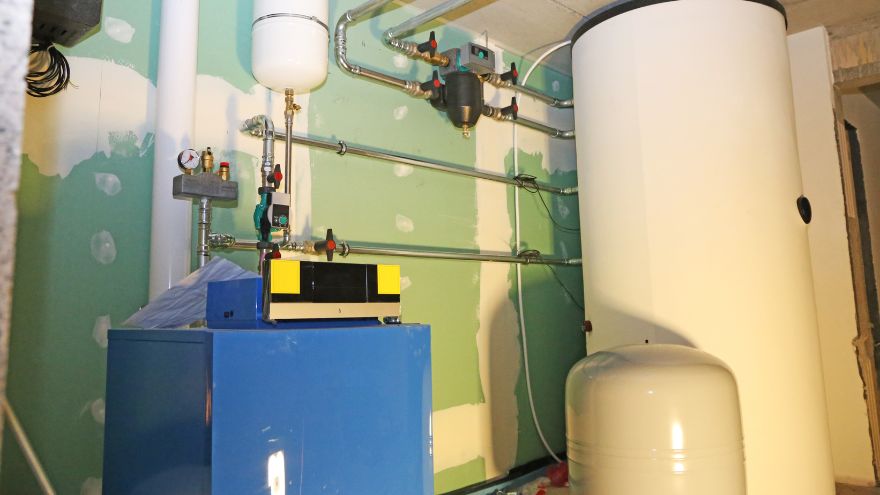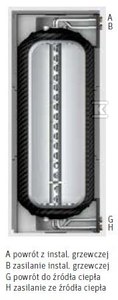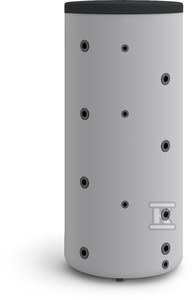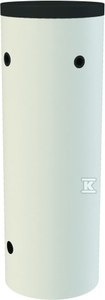Buffer tanks serve as a reservoir of heating water, which is heated by a heat pump or other heat source. By accumulating energy in the form of hot water, the buffer guarantees smooth and efficient heat delivery for home heating or domestic water heating.

Check the buffer tanks at the Onninen wholesaler
Characteristics of a buffer with a coil
 The coil, an integral part of many models of buffer tanks , functions as a heat exchanger, allowing heat to flow smoothly from one medium to another. Heat buffers with a coil facilitate the integration of various heat sources, such as solar panels or a solid fuel boiler. This increases the flexibility of the heating system and allows the investor to use the available energy sources more effectively.
The coil, an integral part of many models of buffer tanks , functions as a heat exchanger, allowing heat to flow smoothly from one medium to another. Heat buffers with a coil facilitate the integration of various heat sources, such as solar panels or a solid fuel boiler. This increases the flexibility of the heating system and allows the investor to use the available energy sources more effectively.
However, these types of buffers have disadvantages. Their initial cost may be slightly higher. They also require more space in the boiler room. It is also worth remembering that a buffer with a coil is not useful in every installation. It is suitable for installations using various heating circuits or equipped with additional heat sources. In the case of energy-efficient houses with underfloor heating as the only heating system, a buffer is not necessary.
Characteristics of the buffer without a coil
 Buffers without coils are perfect for installations with one heating circuit, where the heat pump is the main source of heat for heating the house. Thanks to them, it is possible to effectively store excess heat when the heat pump is working at full power and the heat demand is low. This allows you to optimize the pump's operation, resulting in energy savings and reduced operating costs.
Buffers without coils are perfect for installations with one heating circuit, where the heat pump is the main source of heat for heating the house. Thanks to them, it is possible to effectively store excess heat when the heat pump is working at full power and the heat demand is low. This allows you to optimize the pump's operation, resulting in energy savings and reduced operating costs.
Heat buffers without coils are particularly useful for houses with underfloor heating as the only heating system. They allow you to maintain a constant temperature of heating water in the installation, which ensures comfortable and even heating of rooms.
When using buffers without coils, you can also use two electricity tariffs, making the savings on your bills even greater. The buffer tank can additionally cooperate with a photovoltaic installation, allowing excess electricity to be stored in the form of hot water, which allows you to heat the house at night without having to use electricity supplied from the electricity grid.
How to choose the right buffer?
The choice between a buffer with a coil and a variant without a coil should depend on the specifics of a particular heating installation. The former works best in systems equipped with different heating circuits with different heating water temperatures or with different heat sources.
A buffer without a coil is best suited for installations with one heating circuit - especially where the heat pump is the main heat source. Such a buffer has a purely accumulative function, enabling the storage of excess heat and optimizing the operation of the pump. There is no need to transfer energy from one circuit to another.
Buffer tanks at the Onninen wholesaler
The Onninen installation wholesaler 's offer includes a wide selection of buffer tanks, among which you will certainly choose a model adapted to the specificity of a given device.
Roth Thermotank Quadroline TQ-T buffer tank
 It is the world's first pressure-resistant buffer tank. Composite technology (glass fiber reinforced plastic) with an aluminum anti-diffusion layer was used to produce the Roth Thermotank Quadroline TQ-T buffer tank . The model is compatible with all types of heat sources, especially heat pumps, gas and oil boilers, and solar installations.
It is the world's first pressure-resistant buffer tank. Composite technology (glass fiber reinforced plastic) with an aluminum anti-diffusion layer was used to produce the Roth Thermotank Quadroline TQ-T buffer tank . The model is compatible with all types of heat sources, especially heat pumps, gas and oil boilers, and solar installations.
Galmet SG buffer tank
GALMET SG(B)1000L buffer tank intended for storing demineralized boiler water. Thanks to the coil, it can be powered from several sources. Hard polyurethane foam or soft, detachable polyurethane foam ensure a very low heat transfer coefficient. The Galmet SG tank can operate at a maximum pressure of 0.3 MPa2.
De Dietrich BT300 buffer tank
The De Dietrich BT300 buffer tank is designed to operate at a maximum working pressure of 0.3 MPa3. Made of the highest quality materials, it works well even in installations operating in the most difficult conditions.
A properly selected buffer will increase the efficiency of the entire heating system, contributing to energy savings, comfortable heating and environmental protection. It is worth consulting the decision with a professional installer or employees of our wholesaler.